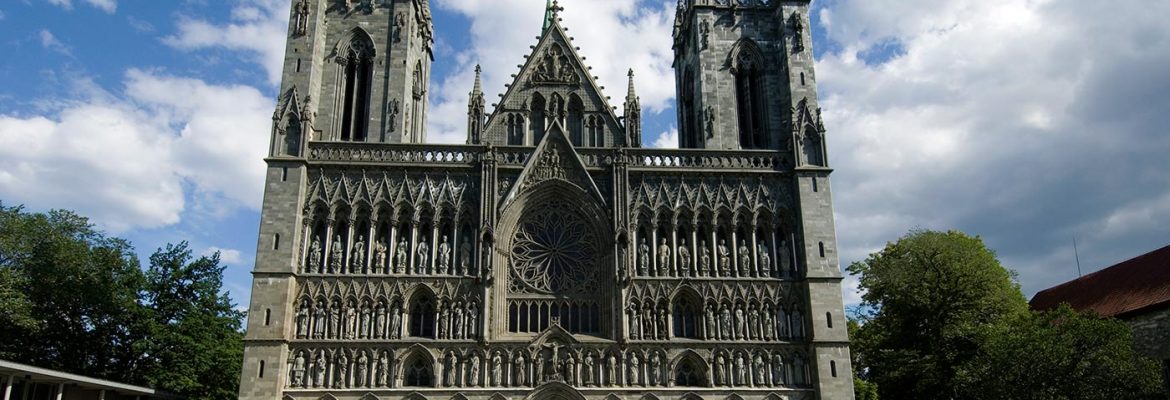Nidarosdomen, Norway
Nidaros Cathedral, constructed in the late 11th century, is Scandinavia’s largest medieval building. Outside, the ornately embellished west wall has top-to-bottom statues of biblical characters and Norwegian bishops and kings, sculpted in the early 20th century. Within, the cathedral is subtly lit (just see how the vibrantly coloured, modern stained-glass glows, especially in the rose window at the west end), so let your eyes attune to the gloom.
The altar sits over the original grave of St Olav, the Viking king who replaced the Nordic pagan religion with Christianity. The original cathedral was built in 1153, when Norway became a separate archbishopric. The current transept and chapter house were constructed between 1130 and 1180 and reveal Anglo-Norman influences (many of the craftsmen were brought in from England), while the Gothic choir and ambulatory were completed in the early 14th century. The nave, repeatedly ravaged by fire across the centuries, is mostly a faithful 19th-century reconstruction.
Down in the crypt is a display of medieval carved tombstones (the majority restored from fragments since many headstones were broken up and carted away to be recycled in domestic buildings). Look for one inscribed in English and dedicated to one William Miller, Shipmaster, of Dundee, Scotland, who met his end near Trondheim in the 18th century.
You can wander around freely but it’s worthwhile joining a tour (a 15-minute canter or a more detailed 45-minute visit). Times vary but there are up to four daily in English (usually at 11am, noon, 1.30pm and 4pm). Music lovers may want to time their visit to take in a recital (admission free; [hrs] 1pm Mon-Sat mid-Jun–mid-Aug) on the church’s magnificent organ.
From mid-June to mid-August, you can climb the cathedral’s tower for a great view over the city. There are ascents every half hour from its base in the south transept.
Admission to the cathedral also includes the complex of the adjacent 12th-century Archbishop’s Palace, commissioned around 1160 and Scandinavia’s oldest secular building. In the west wing, Norway’s crown jewels (adult/child/family Nkr70/25/165) shimmer and flash. Its museum (adult/child/family Nkr50/25/125; [hrs] 10am-3pm Mon-Sat, noon-4pm Sun May–mid-Jun & mid-Aug–mid-Sep; 10am-4pm Mon-Fri, 10am-3pm Sat, noon-4pm Sun Jun-Aug; core hrs 11am-2pm Wed-Sun rest-of-year) is in the same compound. After visiting the well-displayed statues, gargoyles and carvings from the cathedral, drop to the lower level, where only a selection of the myriad artefacts revealed during the museum’s construction in the late 1990s are on show. Take in too its enjoyable 15-minute audiovisual programme.
The adjoining National Military Museum (admission free; [hrs] 9am-3pm Mon-Fri, 11am-4pm Sat & Sun Jun-Aug), in the same courtyard, is full of antique swords, armour and cannons, and recounts the days from 1700 to 1900, when the Archbishop’s Palace served as a Danish military installation. On the top floor is the Hjemmesfront (Home Front) museum, devoted to Trondheim’s role in the WWII resistance.
Gibraltar – Top of the World Arctic Circle © Monika Newbound


